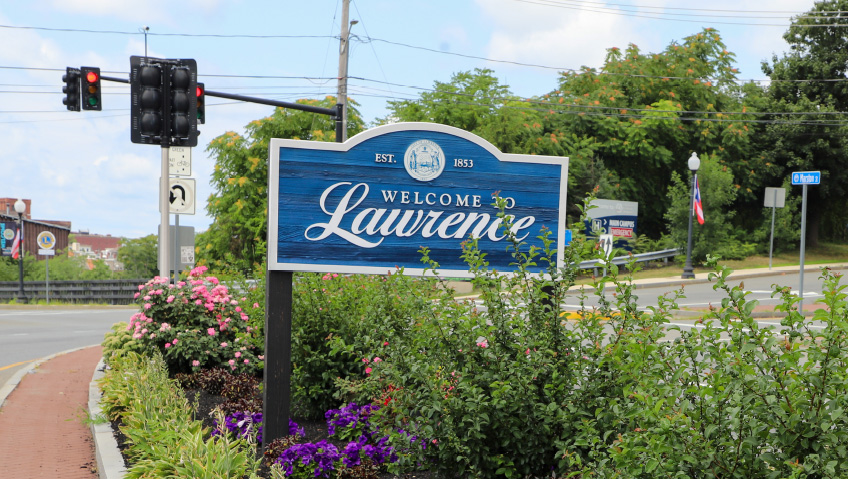From parking lot painters and dry cleaners, to restaurants, mobile homecare services, and much more, Canadians are increasingly discovering the benefits of being in business for themselves in partnership with big brands. After fifty years in the field, the Canadian Franchise Association (CFA) is the trusted partner prospective franchisees need to help lead the way.
Many business owners are overwhelmed by the realities of entrepreneurship in the current economic climate and for good reason. With supply chain and goods sourcing issues at an uncomfortable high, starting a new business on one’s own is, in many cases, not the most attractive option.
That is where franchising becomes a very viable option for a growing number of Canadians. Franchise owners find a support system that sole operators often can only ever wish for in the day-to-day running of independent small businesses.
The CFA performs innovative work and Canadians stand to gain generous benefits from its networks and support. In current markets, Canadian franchising is the twelfth-largest industry in the country, rolling in more than CAD 120 billion annually and creating jobs for nearly two million workers, according to David Druker, Chair of the CFA Board of Directors and President and CEO of The UPS Store, Canada.
“Franchising is for people looking to be in business for themselves but not by themselves,” he says, noting that the CFA’s goal is to help everyday Canadians realize their dreams of business ownership and make “franchising a viable option for Canadians as they look at small business… as we move forward after the last couple of years of uncertainty in the world,” he says. The advantages of being a franchisee are many. Instead of having to come up with operational procedures, branding, layouts, staff guidelines, and everything else that comes with owning and running a small business, franchise owners receive daily guidance through every aspect of operations.
“It’s about collaboration. It’s about partnership. It’s about being stronger together. That’s what the Canadian Franchise Association focuses on. The strength of the community and growing the community,” Druker says. He predicts that the number of franchises in Canada should reach 71,000 by the end of 2022. “The opportunities are boundless,” he adds.
While conforming to a standard set of guidelines may seem daunting for some, walking into a business based on models that have stood the test of time and making it your own holds merit for those who invest in franchises. The level of support owners receive is a layer of safety and offers significant reassurance. Working as part of a team within a family of businesses that receive the same education and guidance also creates an atmosphere of trust and belonging within franchises that independent ownership does not offer.
“At its core, franchising is about partnership. That is a higher priority for entrepreneurs than ever before to invest in proven models. Our entire organization and I are passionate about the industry, and that is why we’re such active members of the CFA,” says Ryan Picklyk. Picklyk is the Vice-Chair of the CFA Board of Directors and Senior Director of Real Estate and Franchising of A&W Food Services, Canada, a restaurant chain of over 1,000 outlets across the country. Such solid partnership means there is always a ‘big brother’ to call when things are unclear or intimidating.
“Each brand is a community. Now more than ever, that sense of community is imperative in business,” Druker adds, describing the CFA’s annual convention in Ottawa, Ontario, as resembling a family reunion. What is even better is that brands in direct competition reach out to each other during this gathering of franchisees to establish strong networks. Druker describes franchises in Canada as “fundamental to small businesses which in turn are fundamental to the Canadian economy.” Because, in the end, business is all about people.
But the CFA is not just building communities through franchising. The association is the industry’s greatest advocate in Canada, keeping its ear to the ground for any legislation and other factors that may affect its members. To this end, it remains in close conversation with both provincial and federal governments to ensure that the necessary information and possible effects get communicated to stakeholders who keep the industry thriving.
Despite the inevitable ebb and flow of the economy, the CFA supports franchisors just as they support their franchisees by keeping a close watch on the news and developments throughout the country and locally. Members can rest assured that the association has their backs at all times.
“The success rate of a franchise is considered to be higher than an independent small business. Human beings don’t know what they don’t know, and if you have no one to turn to to answer those questions, that’s where you end up with… grey areas,” says Druker.
So how does one go about buying a franchise and what are some of the most important matters to consider when deciding whether it is the right choice for you? Picklyk’s advice is to understand that running a successful franchise means replicating and running the original model in one’s own business to an exacting standard.
“It’s a unique form of entrepreneurship in this way. The best analogy I can think of is in sports. It’s the difference between the coach calling individual players who then execute. Understanding what kind of business owner you want to be and finding a model that you have confidence in is key in the decision about what franchise is right for you,” he says.
The second important consideration, he says, is to get to know the people you will collaborate with if you do buy into the brand. “That just comes from doing your homework. Whether it’s through Franchise Canada online, cfa.ca/lookforafranchise/, or attending one of our Franchise Canada shows,” says Picklyk. “It’s a great place to start and a great place to connect with franchisors. Our members are the top of the class in the industry, and they abide by the highest standards,” he continues, highlighting the importance of speaking to people who have already taken the leap and are well-seasoned in the franchise world.
As such experienced business owners will attest, the devil is in the details, and carefully studying the disclosure documents is imperative. Such documents set out to provide potential partners with all they need to know to make a final decision. “Reviewing that document with a franchise lawyer is a big piece of that homework. CFA has a long list of law firm members who can help in this area as well,” Picklyk says.
Another great chance to learn more about some brands comes on ‘discovery days’. These are gatherings where interested prospective buyers receive a chance to meet the leaders and relevant stakeholders who offer guidance and more information about their brands and business models. “Deciding which franchise is right for you comes from doing your homework and asking lots of questions along the way,” he adds.
Part of that process includes spending time on the ground with real-life franchisees, those who are already in the industry that you are thinking of joining. Meet with them, discuss the realities and ask yourself some big questions.
Can you maintain the hours it takes to make the business work? Do you enjoy the amount of contact with the public the business offers or the lack thereof? And so on. “Most franchises will allow you to have an experience day. Please go and spend an afternoon with them. See what a day-in-the-life is like and make sure that it matches up with what you want to do,” Druker says, also counselling that it is good to be clear on what the capital and human engagement demands on the owners of a franchise are before signing up. “Being unable to do so should cause a little bit of uncertainty. At the very least, you should be able to sit in the location and watch what goes on for the day,” he advises.
To this end, the CFA offers a multitude of free resources like its Franchise101 publication and an online personality profile to ensure that the prospect’s character lines up with their ideal business opportunity. Another factor the two leaders agree on is not to rush into the final decision and to be wary of pushy sellers.
“We award franchises; we don’t sell them. If someone is sitting there tapping the pen and telling you to hurry up and make your decision, that’s not generally a good indicator. You are getting into a very long-term relationship,” Druker says. He points out that multi-generational and multi-decade franchisees are common amongst the association’s members. Therefore, this decision-making process, he says, is led by the prospective buyer’s personal goals and whether they are looking to buy to future-proof their finances or are meeting current demands.
The demographic in search of franchises is as diverse as the field itself. For this reason, the CFA is indispensable in its guidance and advice to prospective franchise buyers and owners alike. To help protect its members and the public, the CFA is proud to share the fact that members are held to a strict code of conduct. “There’s something for everybody as long as you take the time to match up your personality traits and abilities with what you are going to do,” Druker says.
As Picklyk points out, achieving success in this market is the result of cultivating different partnerships, and that, he adds, means asking for help when you need it. This aspect seems to be driving interest in this particular business model, with Druker quoting internet growth statistics of over 700 percent on searches alone and average growth of around three percent in franchise brands over the past year.
As platforms like Zoom have made collaborating easier than ever, meetings and training sessions have soared in attendance from around thirty participants travelling from all over the country and gathering in a single location to about three times that number attending online in the comfort of familiar spaces.
CFA members are not all about work and no play, however. Some of its most fun gatherings happen when individual franchises sponsor good work. Like when The UPS Store invites ill kids from the Starlight Children’s Foundation to experience wonderful events that they may not otherwise have the opportunity to enjoy. The next event, to be held in Montreal and Toronto, involves taking the children around a racetrack in exotic cars. It also does adapted snowmobile and speed boat experiences for the kids. In addition, the association itself contributes extensively to community projects to give back to its neighbours.
The CFA is also a member of the International Franchise Association and the World Franchise Council, allowing it to stay abreast of international market trends. This gives it a wider scope from which to advise its members and the public. When it comes to navigating new economic landscapes, Picklyk reminds us that proven models are typically more robust as consumers tend to reach for the familiar in uncertain times. This trend appears to be growing internationally.
Another hot trend appears to be the new phenomenon of brands working together for mutual benefit. One example of this is the collaboration between Walmart and The UPS Store. To use space more effectively and allow people more of a ‘one-stop-shop’ experience, the two giants are joining forces.
“More franchises are looking to return to somewhat of a community-type environment where the front-of-store has more options, whether it be a dry cleaner service or eye care, et cetera. That’s been major for us and our franchisees,” says Druker. This move toward changing how we look at teamwork spells marvellous new opportunities for brands that find that they are an easy fit in the long run for working side-by-side. These are, no doubt, exciting times for franchises and their owners, and we look forward to following the market’s evolution.






